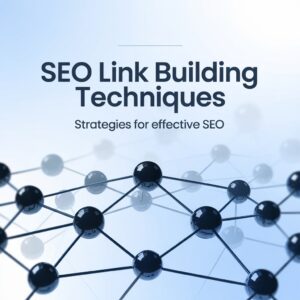On-page optimization is a crucial aspect of SEO that involves optimizing individual web pages to rank higher and earn more relevant traffic in search engines. This includes optimizing content, images, links, and other elements to create a user-friendly and search engine-friendly website. In this blog post, we’ll cover the key on-page optimization techniques you can use to boost your website’s SEO.
Keyword Research and Optimization:
Keyword research is the process of finding keywords and phrases that people are searching for in search engines. These keywords and phrases can then be used to optimize website content and improve website ranking. To conduct keyword research, you can use tools such as Google Keyword Planner, SEMrush, and Ahrefs. Once you have a list of keywords, you can then optimize your website content by incorporating these keywords into your pages, including title tags, meta descriptions, headings, and body text.
Title Tag and Meta Description Optimization:
Title tags and meta descriptions are key elements of on-page optimization. They help search engines understand the content of your web pages and provide a brief description of what users can expect to see on your pages. Title tags should be concise, descriptive, and contain your primary keyword. Meta descriptions should be engaging and encourage clicks by offering a brief overview of what users can expect to find on your page.
Header Tag Optimization:
Header tags, such as H1, H2, H3, etc., are used to structure content and improve readability. Header tags help search engines understand the hierarchy of your content and give users an idea of what to expect as they read through your page. Header tags should be used to create a logical structure for your content and should contain relevant keywords.
Content Optimization:
Content is one of the most important on-page optimization factors. It should be high-quality, well-researched, and relevant to your target audience. When optimizing content, it’s important to incorporate keywords, use header tags to structure content, and ensure that your content is both search engine and user-friendly. To optimize content for search engines, you can also use subheadings, bullet points, and images to make your content more readable and engaging.
Image Optimization:
Images can greatly enhance the user experience on your website, but they can also slow down page speed and negatively impact your website’s SEO. To optimize images for both performance and SEO, you should compress images to reduce file size, use descriptive filenames and alt tags, and only use relevant images that add value to your content.
Internal Linking:
Internal linking is the process of linking to other pages within your website. This helps users navigate your site and allows search engines to understand the relationship between different pages on your site. When linking internally, you should use descriptive anchor text and link to relevant pages.
URL Structure Optimization:
The structure of your URLs can greatly impact your website’s SEO. URLs should be concise, descriptive, and contain relevant keywords. To optimize your URL structure, you should use hyphens instead of underscores, keep URLs as short as possible, and include keywords in your URLs.
Mobile-friendliness and Page Speed Optimization:
In today’s search landscape, it’s important for websites to be mobile-friendly and load quickly on both desktop and mobile devices. To optimize for mobile-friendliness, you should ensure that your website is responsive and adjusts to the size of the device being used. To optimize page speed, you should minimize the size of images, reduce the number of plugins and widgets, and use a fast and reliable web host.
Conclusion:
In conclusion, on-page optimization is an important aspect of SEO that can greatly impact your website’s ranking and visibility on search engines. By incorporating the on-page optimization techniques discussed in this blog post, you can boost your website’s SEO and attract more relevant traffic to your site. Remember to keep your content high-quality, relevant, and user-friendly, and continually monitor and adjust your on-page optimization efforts to stay ahead of the competition.





